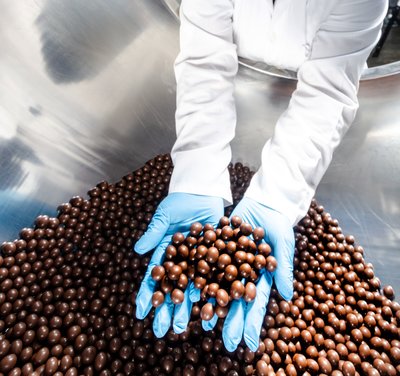The pandemic has made us look at food in a way more conscious manner. A lot of what was taken for granted by consumers before is now arousing their interest. For example, where does their food come from, is it sustainable grown, is it safe to consume and more. While there was a trend towards this sort of change, the pace has now accelerated and the ecosystem is adapting.
The escalated need for traceability
Food trade is a way more complex issue than it is understood to be. While origin, GI tagging and quality differentiation help promote a produce, it also makes the commodity vulnerable to fraud.
 Usually, the country of origin of food products is linked with and perceived to be, produce specific, consider examples like Californian Almonds, Swiss Chocolates, or Kashmiri Apples. Such associations assure quality and are useful in commanding a better price. However, it also makes their trade vulnerable to malpractices. For example, recently Indian Pepper ($6,000 per tonne) lost ground to cheaper pepper from other countries that were being sold as Indian pepper.
Usually, the country of origin of food products is linked with and perceived to be, produce specific, consider examples like Californian Almonds, Swiss Chocolates, or Kashmiri Apples. Such associations assure quality and are useful in commanding a better price. However, it also makes their trade vulnerable to malpractices. For example, recently Indian Pepper ($6,000 per tonne) lost ground to cheaper pepper from other countries that were being sold as Indian pepper.
This brings in the critical element of assurance and proof of quality for each farmer to avoid the risk of returns for their produce in the international market. Standing testimony to this context, traceability is key parameter in the food value chain linking the two ends of producer and buyer, and thus building trust between producer and procurer, further between retailer and consumer.
Traceability is not a choice, anymore
Adopting traceability in the complete value chain of food processing is now no more a choice. It rather poses opportunities that are emerging in the field of digitisation of the agri-food Industry. Recently, demand for accurate and timely traceability of products and activities in the supply chain has seen a significant spike in food and agribusiness. Food safety and traceability are currently at the forefront of both government and industry discussions around the world.
Tracing the journey of the produce through all stages of the supply chain benefits all stakeholders. For example, the customer gets to know more about the farm, farmer, produce quality and ecological footprint. A compliance agency can easily access if the traded produce meets the required guidelines. A food business can easily check the quality of produce supplied by its vendors. Traceability platforms also serve the double purpose of working as a collaboration tool for different players in the supply chain.
Traceability is not a novel concept anymore and is being used across both B2B and B2C scenarios. It enables capture of data from remote, scattered, and multiple locations to be stored in a central repository, providing near real-time and complete visibility to the management so that timely course corrections can be made where required, reducing risk and saving costs.
Food retailers and businesses dealing in high-value crops use traceability for internal monitoring and quality assurance. While, for food processors and retailers, traceability is useful to spot contamination and food value. This visibility and the transparency aids in recalling only what needs to be rather than the entire consignment, which helps to save cost and time.
Guaranteeing Food Safety – The New Normal
The benefits of traceability and quality testing are widely recognized. However, the infrastructure to ensure the same is difficult to access even in developed economies. Laboratory testing, for example, is time consuming, can be expensive and access can be tough for most producers. When it comes to global trade, these represent serious barriers. The market for safe foods that are traceable exclude small-scale agricultural producers who lack the resources to comply with increasingly strict standards, particularly requirements for tracking and monitoring environmental and supply chain variables through sophisticated technologies.
The stakes are higher for small scale farmers who do not have access to technology. They need more visibility to buyers and require assurance that their crop will sell at international prices. These are precisely the reasons why we need digital technologies. There are solutions that combine technologies like Blockchain, IoT and Artificial Intelligence and bring all the data and stakeholders in a value chain on a single platform.
TraceNext is one such comprehensive agri-food solution that ensures a competitive edge for food companies. This tool provides real-time on-farm quality testing reports powered with AI (saving time and money of the growers) combined with Blockchain based traceability solution covering the entire spectrum of farm-to-consumer value chain. Essentially all aspects of food tracking, safety, testing and supply chain are encapsulated in one platform. Solutions like these are easier to adopt for businesses by bringing down the number of vendors they have to deal with; reducing technology spend and conveying an undeniable value proposition.
To sum up, as more and more emphasis is on food safety, trans-border trade of food continues to rise across the agricultural industry, the need of globally standardised technology tools deployed at each stage of farm-to-retail is deemed necessary to guarantee trust and commitment that all consumers deserve.
If you want to find out more about TraceNext, visit their website or take a look at their solution deck.
